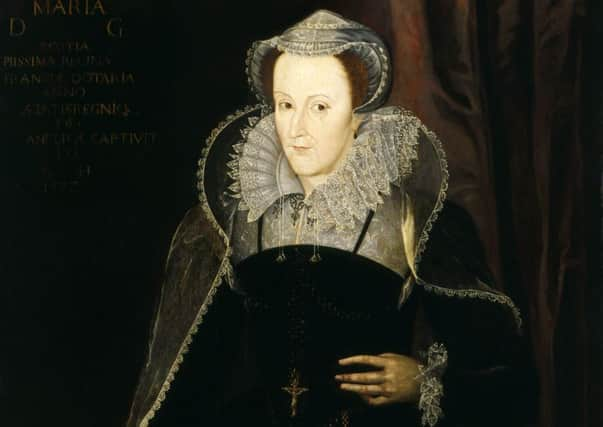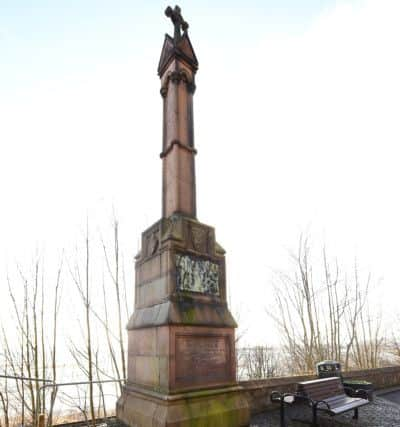Scotland’s kings and queens: Five fascinating facts


Fact, they say, is stranger than fiction as the real life escapades of Scotland’s monarchs over the centuries suggests.
No king or queen of Scots before the Act of Union in 1707 could afford to live without keeping an occasional eye over their shoulder.
Advertisement
Hide AdEven the most successful rulers had to endure threats to their position and rebellions led by traitorous nobles.


Securing international alliances, informal pacts and unwritten allegiances were all part of the job. But events had a nasty habit of getting in the way.
Scotland, a province of France?
Mary became Queen of Scots at the age of six days in 1542 following the death of her father James V. There was much argument among the nobility over who the infant monarch should marry - at one stage it was agreed she would move to England and wed Edward, the son of the infamous Henry VIII. After much wrangling between pro-France and pro-England factions, she was eventually sent to France at the age of five. Mary enjoyed her childhood in the French court and married the heir to the throne, Francis, in 1558. It was latterly revealed that the queen had signed a secret agreement ahead of the wedding bequeathing Scotland and her claim to the English throne to France if she died without issue. Francis would become king of France in 1559 but was dead within a year from a brain abscess. Mary returned to Scotland in 1561 for a tumultuous six year stay that led to her eventual abdication in 1567.
A fateful horse rise
Alexander III was, by medieval standards, a highly successful king. It was he who added the Western Isles to Scotland in 1266 following a skilful military and diplomatic campaign against the Norwegian king Haakon. But Alexander had one crucial failing - he had no living male heir. His first wife, Margaret, had died in 1275 and so had their three children. Alexander, determined to protect his legacy, remarried in 1285. Following a meeting with his royal advisers at Edinburgh Castle in March 1286, the king announced he would travel that night to Kinghorn to see his new bride, whose birthday it was the next day. He duly set off on horseback and crossed the Forth at Queensferry. He was strongly advised to spend the night at Inverkeithing rather than continue along the coastal path in the pitch darkness, but the king demanded his party carry on. Nearing Kinghorn, he became separated from his guides. His body was discovered the following morning at the foot of the cliffs, his horse presumably having lost its footing. The dynastic crisis that followed Alexander’s death would eventually plunge Scotland into a bitter and protracted war of independence with England, which would continue intermittently for much of the next 50 years.
A mass invasion of England
The invasions of Scotland by the English king Edward I and his son Edward II have long since passed into folklore. But Scots rulers were not adverse to leading armies south of the border when it suited their own political goals. Constantine II was crowned in 900, a time when his kingdom, known as Alba, centred around the River Tay, extending as far south as the Forth. It was during this time that the words Scotland and Scots were first recorded. Like his contemporaries, Constantine’s reign was marked by regular warfare and complex political alliances with the several other major kingdoms in the British Isles. He was forced to pay homage to the Anglo-Saxon king Æthelstan on several occasions. Constantine turned the tables on his rival in 937 when he led a combined invasion south along with Owen of Strathclyde and Olaf Guthfrithson, the Norse king of Dublin. What became known as the Great Battle was fought at Brunanburh, somewhere in north-west England, and resulted in a resounding victory for Æthelstan. Constantine survived the conflict and returned north. He later abdicated his throne in 943 to become a monk, most likely at St Andrews.
The Gentleman Adventurers of Fife
James VI was determined to quash the kinds of internal revolts that his predecessors had spent so much time dealing with. The Gaelic-speaking Hebrides had been a thorn in the side of the Scottish crown since the last Lord of the Isles, John Macdonald II, forfeited his title and lands to James IV. With no effective governance of the islands, the native clans led numerous raids on the mainland. James VI responded by offering 12 Fife lairds the chance to ‘civilise’ the isle of Lewis by claiming forfeited lands of the clan Macleod. The aim was to promote the use of the Scots language, spread the reformation and put an end to the island’s independent Gaelic culture. The first attempt in 1598 led to the so-called gentlemen adventurers being driven out by locals. Subsequent invasions of Stornoway led to the passing of the Statutes of Iona in 1609, which required clan chiefs send their heirs to Lowland Scotland to be educated in Protestant schools.
A shipwreck marks an unhappy trip home
Advertisement
Hide AdCharles I was born at Dunfermline Palace in 1600, the last king of an independent Scotland to be born in the country. When his father James VI inherited the English throne in 1603, he joined his family in settling in London. Charles would not return north of the border until 1633 when he arrived in Edinburgh for his Scottish coronation, a full eight years after he had succeeded the throne. The coronation ceremony raised eyebrows among the Presbyterian Scots nobles for adhering to Episcopalian practises. Charles’ tour then took a further turn for the worse. The Blessing, a royal ferry, capsized and sunk off the coast of Burntisland. Along with several members of the king’s entourage, many priceless Stuart relics and coronation items were lost. A distraught Charles cut short his planned coronation tour and returned south. 19 Lancashire women were later rounded up, condemned as witches and blamed for the sinking.